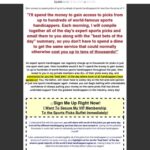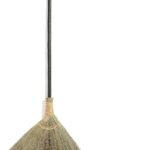[ad_1]
For some reason, newbie purse makers are intimidated by the thought of sewing binding to their purses. From the onset, let me encourage you to set those fears to the side as there is no need to allow this small part of the process to frustrate you. There are only two parts of the structured handbag that requires sewing with a sewing machine, and they are both relatively straightforward. The first is sewing a pocket to the interior lining; the second is sewing the binding to the purse board. Attaching the binding is a necessary step when making a particular type of firm bodied straw bags, clutch purses as well as structured handbags.
Learning to Bind Purses By Visuals
When you have instructions or are guided by visuals, your experience is so much easier. Perhaps that’s why some people choose to do live classes that are handy with the right instructor. Unfortunately, the wrong instructor in a capacity crowded classroom can be a turnoff as it is generally ineffective. In any event, if you don’t have the luxury of a sit-down class where you benefit from your instructor’s undivided attention, you may wish to continue reading for a few helpful tips to get you well on your way. For those who need more, there are DVD tutorials to make your sewing more enjoyable.
Binding a Bag Made Easy
Sewing binding on a clutch purse, straw bag, or a structured handbag is easy when your instructions are clear. The most challenging project can become a cinch with useful directives. One issue that many budding purse designers face is sewing binding to a firm bodied handbag. In fact, many are quick to toss out a project because of one simple step. Don’t do that. Once you’ve learned the simple steps to applying binding you won’t think twice about creating even more fabulous handbags.
While sewing on the binding is not a difficult task, many handbag designers trip up in this area because they do not have clear instructions on how it is done. This tried, and true method of attaching the binding is used in making traditional straw bags and structured handbags in the Bahamas.
What You Need to Know About Binding Your Bags
- Determine the look you want before choosing the binding type. Is your bag going to be casual, dressy, dainty, bold? This will determine your choice of binding.
- What size binding are you looking at applying? The size I recommend is 1″ to allow for a comfortable fit around the front back and side of the board. Some folks choose a larger size, which can look bulky, but you’re the designer; you experiment.
- The weight of your binding not only affects your ability to maneuver but also the look of your bag. I recommend using a lightweight webbing or leather.
- When using straw to bind your bags, choose a soft peel, not the hard, dry straw that gives your hand an extreme workout. Its also a more attractive straw plait designed for this purpose.
- Select a heavy-duty needle that can pierce through your layers. A lightweight needle will frustrate you if it continues to break while sewing.
- Test your threads on a sample webbing with your purse board etc. cheap threads will break easily and hamper your progress. Serger threads are not designed to sew one-ply, so they often break easily.
Ready to Attach That Binding? Here’s what you need to know.
- Cut a clean edge of the binding, fold over about ¼”
- Stitch down to hold in place to reduce chances of fraying (no need to track back and forth)
- Fold the binding in half to create a vertical channel
- Find an inconspicuous position where you want to start your webbing (under a flap is good).
- Slip the channel over your fabric-covered board
- While holding the binding in place, sew as close to the open edge as possible.
- Tug at the binding gently as you sew to avoid puckers
- Take your time going around corners
- When you have made it back to your starting point, cut the binding leaving about 1″ excess.
- Fold the last piece under as you did the first and continue sewing over the start position for about an inch, and reverse the stitch to lock it in.
As a recap, here’s what you want to avoid when sewing your binding:
- Using a webbing that is too narrow to manage
- Using binding materials that are thick and difficult to bend
- Forcing lightweight needles through thick fabrics
- Uneven sewing- keep presser foot at the edge of the webbing when stitching
- Puckering- pull webbing slightly while stitching
Take your time when sewing your binding. It is not important to sew fast; it is essential to sew neatly and accurately. Before sewing your bag, practice sewing your binding on scrap materials. Check both sides for neatness. Now you can begin creating your fabulous firm bodied purses with a neatly applied binding. Give it a try and see how well your purse binding comes out.
[ad_2]
Source by Teri M Bethel








